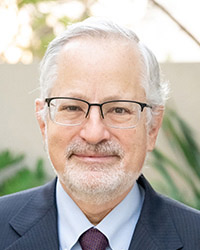An academic paper published in the Journal of Insurance Regulation seems to have rekindled the debate over how much of an impact litigation and fraud have had on property insurance losses and premiums, particularly in Florida.
The paper, “The Case for Pausing Any Immediate Embrace of the Social Inflation Argument for Legal System Reforms,” was penned by Kenneth Klein, a professor at California Western School of Law, who spent much of his career as a business defense lawyer. It was published a year ago but was reposted recently by south Florida plaintiffs’ lawyer Chip Merlin. Merlin argued the study shows that claims of excessive litigation, fraud and social inflation have been blown out of proportion by the insurance industry.
The Klein article exposed how the insurance industry numbers “are simply made up and completely unreliable,” Merlin wrote in an Aug. 15 blog post.
Industry advocates in Florida and beyond said the Klein paper is light on evidence and does not consider the increasingly obvious effects that Florida’s 2022 and 2023 litigation-deterrent laws have had on the state’s distressed insurance market. The Florida Office of Insurance Regulation, in an Aug. 9 bulletin, notes that two years after Florida saw 10 property insurer insolvencies, not to mention hefty rate increases from most other insurers, the state is now enjoying at least minor rate cuts from nine carriers.

“Also, not only are rates stabilizing and lowering for several carriers, but 15 new carriers have entered the market and there are reports of reinsurance prices lowering,” said Scott Johnson, a Florida insurance consultant, author and longtime educator.
“Klein commits the rhetorical fallacy of argument by assertion,” said Jerry Theodorou, a policy director at the R Street Institute, a think tank that promotes free-market solutions. “No proof. No evidence. No support. No data. No facts.”
Here’s a look at some of the paper’s findings, and counter-points by insurance industry advocates:
Fraud Numbers. Klein, who serves as consumer representative to the National Association of Insurance Commissioners, finds fault with statistics that have been cited by the American Property Casualty Insurance Association and others. The APCIA, according to Klein, in 2022 cited FBI information from 2010 showing property-casualty insurance fraud amounts to $40 billion a year, nationwide, costing households up to $700 per year, on average.
But Klein notes that the one-page FBI report appears to refer mostly to fraud on the insurance industry side, including premium diversion or embezzlement by insurance agents; fee churning in reinsurance agreements; insurance company asset theft during mergers; and embezzlement of workers’ compensation premiums.
“In other words, the FBI is not quantifying fraud against insurers; rather, the FBI is quantifying fraud by insurers,” Merlin blogged. “Insurance companies claim that when claims numbers are simply made up, that act constitutes fraud. If that is so, then insurance company fraud statistics are a fraud.”

To be sure, the FBI report does not focus entirely on insurer-side or agent fraud. It goes on to list examples of disaster-related insurance fraud, including false or exaggerated claims by policyholders; misclassification of flood damage as wind; and inflated repair costs by contractors. That section does not provide cost estimates, however.
The APCIA did not dispute Klein’s reading of the slim FBI report. But Michael Richmond-Crum, the association’s director of personal lines, said in an email that another report, by the Coalition Against Insurance Fraud (CAIF), deemed the $40 billion figure to be most credible, as the FBI “is one of the premier law enforcement agencies in the world and accordingly maintain a robust research platform and have a vast network to gather credible and accurate data.”
Klein’s paper also questions CAIF’s assertions. The study noted that the coalition has simply updated an oft-quoted 1995 estimate on fraud costs. But the group provided no archival documentation or information on how the figure was determined, and it appears to have come only from a press release, the law professor said.
Litigation cost data and tort reform. Klein’s study notes that APCIA has cited Bureau of Labor Statistics, the Consumer Price Index, and Insurance Information Institute data to show that from 2018 to 2020 personal injury judgments jumped by almost 25%, far outpacing inflation.
“But if you back up just one year, you’ll see that the median personal injury judgment was about the same as it was in 2020,” he said in an interview with Insurance Journal.
Related: US Nuclear Verdicts Break Record and Drive Social Inflation Higher
And the most-often cited statistic by Florida insurers and regulators, one that appeared to carry the day in legislative debates in 2022, is that Florida homeowners filed 7% of all claims filed, nationwide in 2021, but opened 76% of all lawsuits. That number also may be suspect, Klein warned: The data came from insurance companies, supplied to the NAIC, he said.
Klein’s study was published last year, before Florida’s sweeping reform legislation had time to make much of a difference. The paper contends that previous legislative changes, including 2021’s Senate Bill 76, which, among other changes, aimed to limit attorney fees on assignment-of-benefits claims, had little effect and AOB cases increased in the following months.

Klein said his main point is that good data supporting tort limits is hard to come by, and lawmakers and regulators should be wary of new rules that can hamstring meritorious claims from honest policyholders.
“It may be that even in the best-case scenario for Florida — that legal system reforms in Florida ultimately do stabilize insurance markets (itself an open question) — the cost of stabilization will be outweighed by the cost of leaving harmed Floridians with inadequate recompense,” he wrote.
Johnson and others in Florida have said that Florida was in a unique situation thanks to court rulings and laws enacted in the early 2000s that had tilted the playing field toward opportunistic plaintiffs’ lawyers. Some of those lawyers and roofing companies took advantage of one-way attorney fees and AOBs to create an unprecedented level of unnecessary claims litigation. It took comprehensive action, including an end to AOBs, one-way fees and fee multipliers, along with a higher bar for bad-faith claims, plus tort-reform laws, to finally stem the flood of lawsuits, insurer groups have said.
Theodorou argues that Klein is wrong: Good data about litigation and social inflation is, in fact, available. He points to a recent analysis by the Rand Corporation, which notes that court filings per capita rose about 10% from 2012 to 2019.
The report also found that plaintiff wins rose from year 2010 to year 2019 and trial awards, adjusted for inflation, grew by 7.6% in that period, as did large awards of $5 million or more. The data came from tort case filings in 19 states, though, not the entire country.
The Rand authors also found that insurance claim frequency decreased, “offsetting to some extent any impact of social inflation on loss ratios.” (Social inflation has been variously defined, but usually refers to the trend of higher insurance rates caused by greater litigation demands and awards, brought on by third-party litigation financing, more aggressive advertising by plaintiffs’ lawyers and the whims of gullible jurors.) Swiss Re data also show that nuclear verdicts and social inflation have reached new highs.

Klein pointed out that higher jury awards don’t necessarily translate to higher insurance costs. Many states prohibit insurance policies from paying for punitive damages. And a number of states, including Florida, place a strict cap on punitive damages amounts.
For Florida – ground-zero for insurance litigation – data from regulators show that insurance claims lawsuits have dropped in the last year. Notices of intent to litigate, required by Florida law before suits can be filed, dropped significantly. From January 2023 to September 2023, some 61,790 NOIs were filed. For the same period this year, the number of notices was 40,388, according to the Florida Department of Financial Services’ NOI search site.
That 2023 period includes the wave of litigation initiated by policyholder attorneys just before the 2023 Florida tort-reform measures took effect. So, for the period after that, from Aug. 1 through Sept. 10, 2023, the numbers still show a decline: Some 9,083 notices were filed in that period. For the same period this year, the number of NOIs reached just 5,711, the DFS site shows.
And Florida’s Citizens Property Insurance Corp., the state-created insurer that tracks a range of data, has reported that litigation rates for non-catastrophe Citizens claims dropped from a high of 14% in 2020 to 6% in 2023.
Klein, of course, might argue that those statistics show only that all lawsuits, not just frivolous or fraudulent ones, are in decline.
He used a sports analogy, comparing the property-casualty insurance industry to a football team that has taken some losses. “But when the team loses, the answer is to play better – not to try and fire the other team’s coach.”
Update: This article has been corrected to show that Prof. Klein once worked as a business defense attorney, not an insurance defense lawyer.
Was this article valuable?
Here are more articles you may enjoy.



 Viewpoint: Agentic AI Is Coming to Insurance Industry – Much Faster Than You Think
Viewpoint: Agentic AI Is Coming to Insurance Industry – Much Faster Than You Think  In Alabama, Shot Employee Gets No Workers’ Comp and No Employer’s Liability
In Alabama, Shot Employee Gets No Workers’ Comp and No Employer’s Liability  Why Reciprocal Insurance Exchanges Are Back in Fashion
Why Reciprocal Insurance Exchanges Are Back in Fashion  Businessman, Former Federal Insurance Co. Attorney Hit With $50M Florida Verdict
Businessman, Former Federal Insurance Co. Attorney Hit With $50M Florida Verdict 


